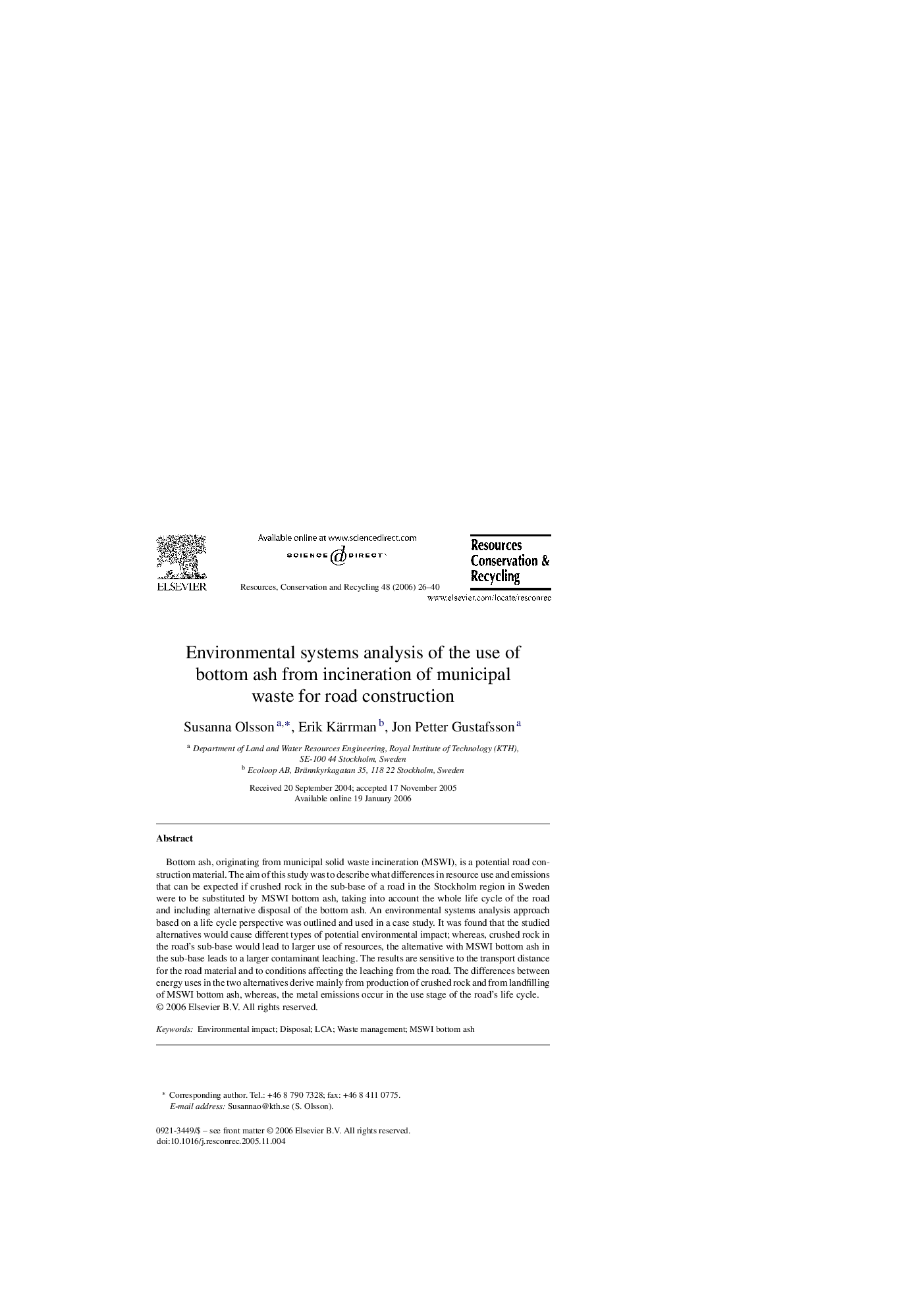| Article ID | Journal | Published Year | Pages | File Type |
|---|---|---|---|---|
| 1064201 | Resources, Conservation and Recycling | 2006 | 15 Pages |
Bottom ash, originating from municipal solid waste incineration (MSWI), is a potential road construction material. The aim of this study was to describe what differences in resource use and emissions that can be expected if crushed rock in the sub-base of a road in the Stockholm region in Sweden were to be substituted by MSWI bottom ash, taking into account the whole life cycle of the road and including alternative disposal of the bottom ash. An environmental systems analysis approach based on a life cycle perspective was outlined and used in a case study. It was found that the studied alternatives would cause different types of potential environmental impact; whereas, crushed rock in the road's sub-base would lead to larger use of resources, the alternative with MSWI bottom ash in the sub-base leads to a larger contaminant leaching. The results are sensitive to the transport distance for the road material and to conditions affecting the leaching from the road. The differences between energy uses in the two alternatives derive mainly from production of crushed rock and from landfilling of MSWI bottom ash, whereas, the metal emissions occur in the use stage of the road's life cycle.
